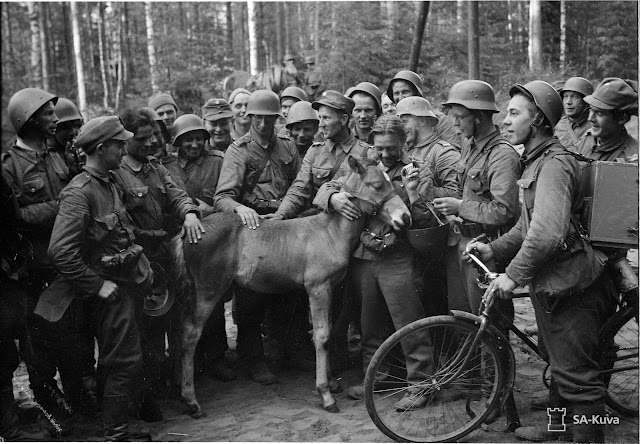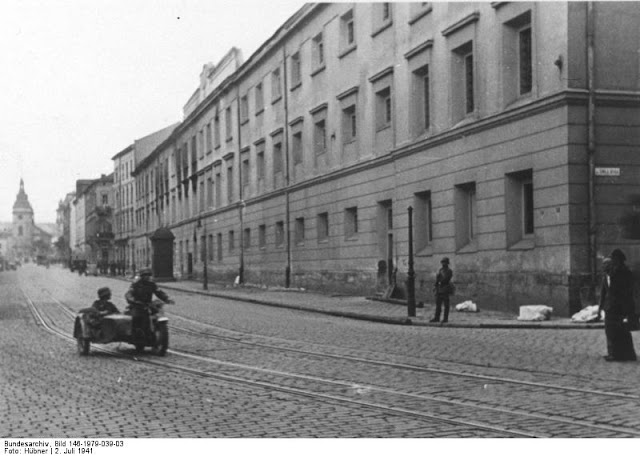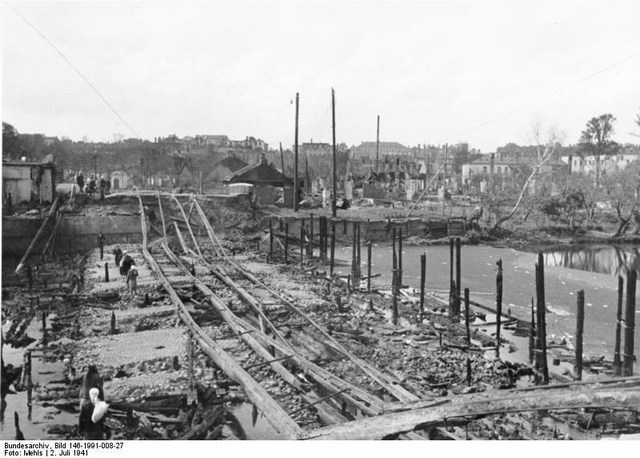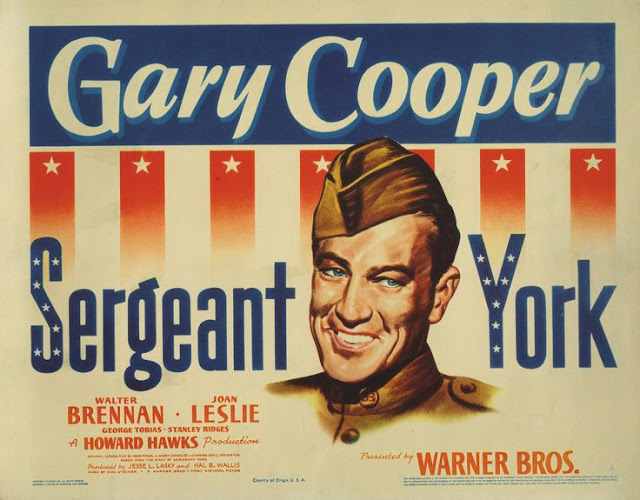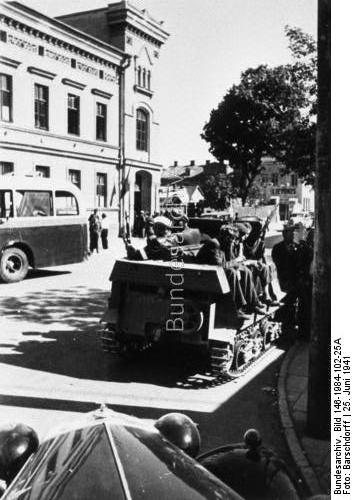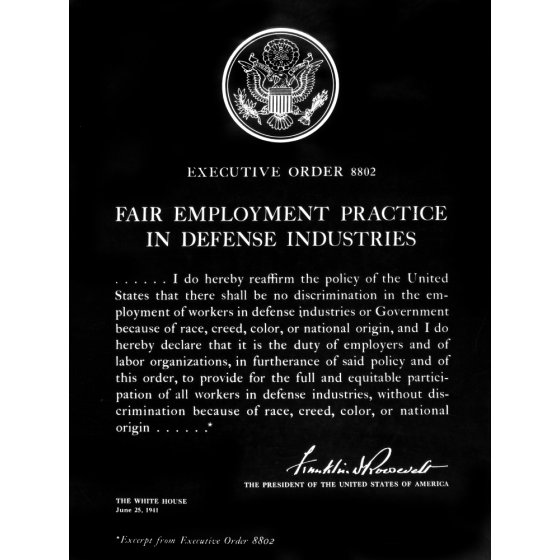Wednesday 13 August 1941
The consensus is that the projected missions can be carried out. At present we have no clear plans yet for solving the Kiev problem and for swiftly occupying the Crimea.Considering that the capture of Kyiv and the Crimea, in fact, are the two primary missions of the Army Group, not having a plan for achieving these objectives is not overly reassuring for the Army Group's prospects.
Halder also sets down his impression of Hitler's most recent Fuhrer Directive, "Supplement to Directive 34." Halder writes:
Attack on Moscow by Army Group Center is approved, but approval is made conditional on so many factors... that the freedom of action which we need for the execution of the plan is severely restricted.Note that Halder says the army does not have the full freedom of action "which we need." Not want, need. Already, doubt is creeping into the high command as to whether Moscow will or even can be captured.
 |
| Dnieper crossing near Strešyn on 13 August 1941. |
In the Army Group North sector, there are fierce battles at Luga, where Panzer Group 4 is attempting to blast out of a bridgehead, and Staraya Russa, where the Germans are pulling back. In effect, for the moment the German offensive has run tight and the Soviets are giving as good as they get.
In the Army Group Center sector, the Soviets continue beating against the exposed German Yelnya bridgehead. General Guderian refuses a request for a pullback there. At Krichev, XXIV Corps (General of Panzer Troops Geyr von Schweppenburg) subdues a pocket of Soviet troops and takes 16,000 prisoners, 76 guns, and 15 tanks.
In the Army Group South sector, leader Ion Antonescu orders the Romanian 4th Army to stop its offensive at Odessa. He orders the generals to build up a position along the Khadzhibey Estuary to the northwest of the city before proceeding further. The halt doesn't really affect the battle because the Soviet troops in Odesa are under orders to stay put anyway - and anyone who disobeys a Red Army order to hold their position usually winds up wishing they had regardless of what would have happened to them in the position.
German 11th Army captures Cherson (Kherson), a key crossing over the Dneipr. While still over a hundred miles from the Crimea, Cherson controls the main line of communications to it. Soviet destroyers and gunboats are used in the defense.
European Air Operations: Activity is light today on the Channel front following the maximum effort of RAF Bomber Command during the night of 12/13 August. The British took unacceptable casualties overnight for a sustained bombing offensive regardless of the damaged caused to Cologne and the other targets. However, the RAF is gearing up for another major effort on the 14th and has plenty of bombers at its disposal.
The Luftwaffe Attacks the northeast British coast at Sunderland, Alnmouth and Horden Colliery. The raids kill four people at Sunderland and two dead at Horden Colliery Yard, with others injured.
 |
| "Australian troops occupy a frontline position at Tobruk, 13 August 1941. Between April and December 1941 the Tobruk garrison, comprising Australian, Polish, Indian and British troops, was besieged by Rommel's forces. It fell to the Germans after the battle of Gazala on 21 June 1942 but was recaptured five months later." © IWM (E 4792). |
Estonian submarines Kalev and Lembit lay mines off Cape Ushava.
The German 2nd S-Boat Flotilla lays minefield Mona I, composed of 18 TMB mines in the south entrance to Moon Sound.
The German 5th M-Boat Flotilla lays minefields Pinnass V and Pinnass VI with 28 mines at Cape Domesnas.
Soviet torpedo boat U-2 Proletariy Ukrainy is lost of unknown causes today.
Battle of the Atlantic: German E-boats sink Soviet minesweeper No. 41 in the Gulf of Finland north of Tallinn, Estonia. Another Soviet minesweeper, No. 89, also is lost today.
Faroes 158-ton fishing ship Sjoborg hits a mine and sinks east of the southern Faroes. This is the second ship sunk in this restricted area recently, and the mines are "friendly" mines.
Soviet submarine K-2 attacks some German ships off Tanafjord, Norway, but misses.
Free French submarine Rubis claims to attack and sink a ship off Norway, but there is no confirmation.
Convoy OG-71 departs from Liverpool bound for Lisbon, Convoy OS-3 departs from Liverpool bound for Freetown.
Royal Navy minesweeping trawler HMS Rysa (Lt. John H. CooperThat ) is commissioned.
Canada orders minesweepers HMCS Llewellyn and Lloyd George.
 |
| "Australian troops man front-line trenches in the Tobruk perimeter, 13 August 1941." © IWM (E 4791). |
Royal Navy 1267-ton schooner Kephallinia makes a supply run from Alexandria to Tobruk, but sinks for unexplained reasons not far from Alexandria. HMS Hero is nearby and picks up survivors.
According to some sources, landing craft tank HMS LCT-14 hits a mine and sinks today. According to other sources, it sinks on the 12th. Whichever day it is, LCT 15 sinks near Tobruk.
Operation Guillotine, the British reinforcement of Cyprus, continues as Royal Navy light cruiser HMS Neptune, minelaying cruiser Abdiel, and destroyer Jackal take troops to the island.
An Italian departs from Naples bound for Tripoli. The convoy is composed of five freighters escorted by five destroyers and a torpedo boat.
The Luftwaffe attacks Alexandria during the night.
At Malta, a Maryland sent to drop propaganda leaflets on Tunisia is shot down.
 |
| Muir Glacier, Alaska's Glacier Bay on 13 August 1941 (National Snow and Ice Data Center, W. O. Field, B. F. Molnia). |
Soviet destroyers Shaumyan, Nezamozhnik, Frunze, and Dzerzhinski support the defense of Odesa by firing at Romanian positions today and throughout the week. Soviet river gunboat Akhiti sinks today from unknown causes.
The Luftwaffe bombs and sinks Soviet freighter Polina Osipenko in the Black Sea.
POWs: Captains A.L.C. Dufour and J.G. Imit of the Royal Netherlands Indies Army and E.H. Larive and F. Steinmetz of the Royal Netherlands Navy escape from Colditz POW camp through a manhole. The first two are recaptured and returned to Colditz, the second two make it to Switzerland.
US/Australian Relations: The goodwill tour of US heavy cruisers USS Northampton (CA-26) and Salt Lake City (CA-25) continues, as they arrive today at Rabaul, New Britain.
 |
| "Construction of the open sheds area of Camp Polk, Louisiana on 13 August 1941" (The Digital Collections of the National WWII Museum). |
Australian Military: The Australian Women's Army Service (AWAS) is raised.
Canadian Military: The Canadian government authorizes the Canadian Women's Army Corps (CWAC).
US Government: Due to the growing war emergency, President Roosevelt signs an executive order suspending the 8-hour workday for certain skilled trades such as mechanics and laborers who are working for the War Department. These men are building infrastructure for the military such as airfields and barracks which has a high priority.
 |
| A soldier of the 9th Australian Division giving a drink of water to a donkey foal in Tobruk during the final months of the city's siege, Libya, 13 August 1941. |
Holocaust: Ostland Reichkommissar Hinrich Lohse orders Jews to turn in all property to have it registered and confiscated, including money and other valuables such as rings and watches.
At Raseiniai, Einsatzcommando 3 executes 294 Jewish women and three Jewish children.
French Homefront: Apparently in response to Premier Petain's somewhat authoritarian speech on the evening of the 12th, communist protesters riot in Paris. The French and German authorities make many arrests.
 |
| Henry Ford (right, in straw hat) with his soybean car, circa 13 August 1941. |
Much mystery surrounds this soybean car (which does not survive because Ford had it destroyed almost immediately after showing it), and at least some scientists today think that the whole "soybean" angle was a scam and, in fact, the car was made of simple plastic - itself revolutionary for the time. In fact, some license plates are made of soybean products during the war, and the drivers learn that farm animals find them quite tasty.
Warner Bros. releases "International Squadron," directed by Lewis Seiler and Lothar Mendes and starring Ronald Reagan and Olympia Bradna. As is often the case during this period, Reagan plays the friend of someone (James Stephenson) who inspires the Reagan character into action. Reagan's character ultimately winds up in the RAF's Eagle Squadron and ultimately becomes a big hero. The film is notable for including actual aerial combat footage shot by Warners' Teddington studios technicians during the Battle of Britain and shipped over the United States. However, the close-up shots of "RAF" aircraft show a motley group of contemporary civilian aircraft dressed up as fighters.
It is Ladies Day at Dodgers Stadium in Ebbets Field in Brooklyn. Running against convention for sports events, General Manager Larry MacPhail stages a fashion show for the ladies.
 |
| Muir Inlet, Alaska on 13 August 1941 (United States Geological Survey (USGS)). |
August 1941
August 2, 1941: Uman Encirclement Closes
August 3, 1941: Bishop von Galen Denounces Euthanasia
August 4, 1941: Hitler at the Front
August 5, 1941: Soviets Surrender at Smolensk
August 6, 1941: U-Boats in the Arctic
August 7, 1941: Soviets Bomb Berlin
August 8, 1941: Uman Pocket Captured
August 9, 1941: Atlantic Conference at Placentia Bay
August 10, 1941: Soviet Bombers Mauled Over Berlin
August 11, 1941: Rita Hayworth in Life
August 12, 1941: Atlantic Charter Announced
August 13, 1941: The Soybean Car
August 14, 1941: The Anders Army Formed
August 15, 1941: Himmler at Minsk
August 16, 1941: Stalin's Order No. 270
August 17, 1941: Germans in Novgorod
August 18, 1941: Lili Marleen
August 19, 1941: Convoy OG-71 Destruction
August 20, 1941: Siege of Leningrad Begins
August 21, 1941: Stalin Enraged
August 22, 1941: Germans Take Cherkassy
August 23, 1941: Go to Kiev
August 24, 1941: Finns Surround Viipuri
August 25, 1941: Iran Invaded
August 26, 1941: The Bridge Over the Desna
August 27, 1941: Soviets Evacuate Tallinn
August 28, 1941: Evacuating Soviets Savaged
August 29, 1941: Finns take Viipuri
August 30, 1941: Operation Acid
August 31, 1941: Mannerheim Says No
2020


